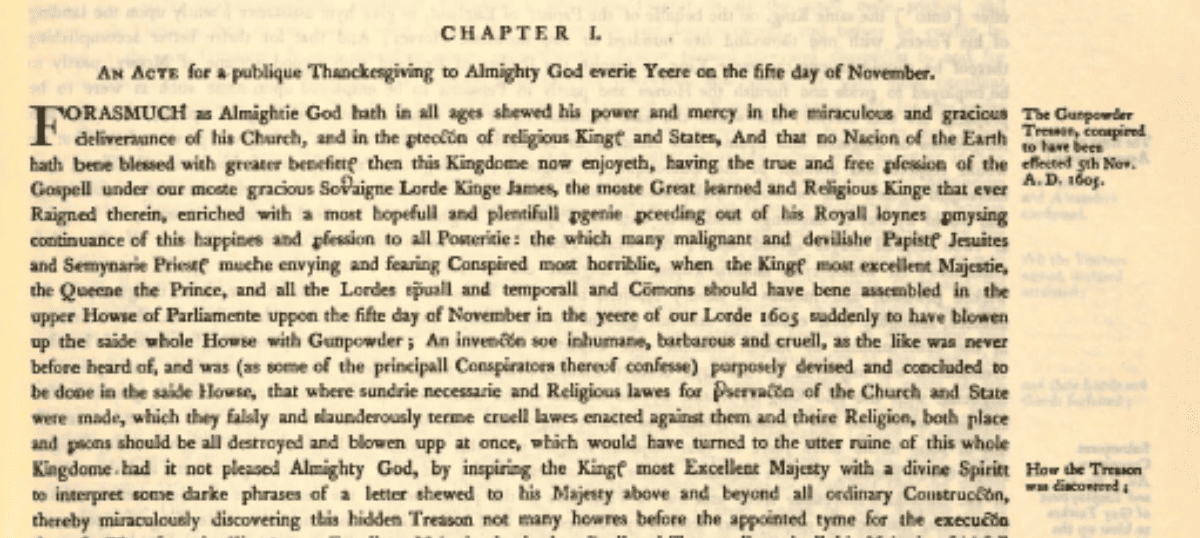How To Lawfully Destroy A Hostile Constitution: An Instruction Manual
A detailed constitutional program structured as democratic reform: weaponise emergency powers, pack the Lords with 250 new peers, abolish 500+ public bodies, withdraw from human rights treaties, criminalise bureaucratic resistance, and lock changes behind referendum supermajorities.

This is not a manifesto. What follows is an attempt at a comprehensive blueprint for the complete constitutional reconstruction of Britain, designed to be executed within a single parliamentary year.
It outlines how a determined government could lawfully dismantle the entire post-1997 liberal order, withdraw from international human rights frameworks, abolish over 500 public bodies, and restructure the Civil Service—all while using existing emergency powers and parliamentary procedures.
This is restorationism in practice: not gradual reform, but systematic demolition and rebuilding of the British state itself.
Part I: Contextual Foundations
The following document outlines a step-by-step roadmap for the constitutional, institutional, and civic reconstruction programme envisioned by a future Restorationist government. It presumes that a future government would share restorationist sentiments, or, be comprised of a political bloc is not presently in government, but is preparing for eventual democratic victory at a General Election.
I will refer to this as A/The Restorationist government/opposition.
The plan is drafted on the basis that, if elected, the Restorationist administration would possess a parliamentary majority sufficient to command confidence in the House of Commons, enabling it to initiate constitutional, legal, and administrative transformation within a single legislative year.
In the words of 16th century lawyer (and Henry VIII propagandist) Richard Moryson, it is his duty of an English lawyer to act "Like a tailor", making an “English gown” of what he is dealt. This article presumes he would need to fashion a new suit entirely. This is a guide to assist those who have never picked up a needle.
The foundational legislative instruments of this programme are the following proposed Acts of Parliament :
- A Great Repeal Act – A comprehensive legislative instrument intended to repeal, dis-apply, or supersede the full structure of post-1997 statutory instruments and treaties that are considered incompatible with parliamentary sovereignty and English constitutional identity. This includes the Human Rights Act 1998, the Equality Act 2010, and all primary and secondary legislation connected with the EU, international human rights treaties, and statutory bodies undermining democratic governance.
- The Restraint of Bureaucratic Overreach Act (ROBO) – This statute will introduce absolute constraints on the creation and continuation of public bodies, reclassify the civil service as contractually accountable agents of policy rather than semi-sovereign technocrats, enforce a hard cap on government headcount and functions, and create criminal and civil penalties for bureaucratic obstructionism. It will abolish over 500 public bodies and prevent their reconstitution.
- The Free Speech (Restoration) Act – This will elevate freedom of expression, conscience, association, and information as natural rights in English law, shielded from redefinition or limitation by international instruments or progressive jurisprudence. It repeals or amends a wide swathe of censorship-related law (including the Public Order Acts, Online Safety Act, and relevant terrorism legislation), and dissolves regulatory censorship bodies such as Ofcom and the British Board of Film Classification.
- The British Citizenship and National Integrity Act – This introduces a new hierarchy of national statuses based on ancestry, assimilation, and strategic contribution. It replaces the post-1948 nationality regime with a descent- and allegiance-based framework and repeals all associated asylum and refugee legislation. It empowers a new Department for Border Security to review, reclassify, or revoke citizenship or residence status on the basis of quantitative integrity metrics.
Phase 1: Pre-Election Fortification (Estimated Timeline: 6–9 Months Prior to General Election)
In this phase, a Restorationist opposition must lay the groundwork for legal and procedural pre-justification of emergency legislative action following an election. Every major challenge that might be mounted in the courts, media, civil service, or by international institutions must be anticipated and addressed.
1.1. The White Book
The first task is to compile all proposed Restorationist legislation, including every core Bill, all relevant Schedules, and a mirror-image set of Regulations that could be enacted via the Civil Contingencies Act 2004 (CCA) in the event of a declared emergency. This White Book should be prepared as a single unified document, paginated, proofed, and indexed. It should be ISBN-registered and made available through official and public channels such as gov.uk and the House of Commons Library. Its purpose is to:
- Establish a legal and democratic link between the electoral vote and the future enactment of these measures.
- Enable courts and Parliament to regard the constitutional settlement as pre-notified, legitimate, and consented to by the electorate.
- Bind Restorationist MPs and Ministers to the electoral platform by transforming manifesto commitments into legislative pledges with traceable legislative intent.
1.2. The Emergency White Paper
A parallel document, distinct from the legal code, must be drafted by the Shadow Cabinet in collaboration with policy think tanks and former officials. This Emergency White Paper will contain detailed evidence on systemic institutional failure, such as:
- The administrative inability to deport foreign nationals with criminal convictions.
- The refusal of Civil Service departments to implement Ministerial policy (e.g., immigration enforcement, gender-based data collection).
- Judicial overreach and the extension of Strasbourg jurisprudence into domestic policy.
- The expansion and ideological capture of the quango state.
This document will serve as a central evidentiary justification for triggering Regulation 1 of the Civil Contingencies Act on Day 0 of the new government’s term.
1.3. Peerage Transparency Programme
To defuse allegations of cronyism or coup-by-peerage, a Restorationist group must proactively publish the names, biographies, and formal appointment letters of all persons intended for life peerage. This should be framed explicitly as a democratic counterweight to unelected Lords who have frustrated legislative reform for decades. Peer-packing is repositioned as public mandate execution.
1.4. Candidate Oath Mechanism
Every candidate standing on a Restorationist platform must sign a formal oath agreeing to:
- Support programme motions and guillotine provisions.
- Vote for Money Bill designations.
- Abide by party-wide reselection procedures which automatically deselect MPs who vote against the reset programme.
This transforms MPs from policy free agents to legal guarantors of the constitutional programme, reducing the risk of internal sabotage.
1.5. Gilt Market Pre-Stabilisation
To pre-empt claims of fiscal irresponsibility and calm bond markets, the Treasury shadow team should prepare and publish a draft Supply and Appropriation (Emergency) Bill, which guarantees that all government bond coupons will be paid in full for a minimum of two fiscal years following the reset. This document should be circulated discreetly to credit rating agencies and institutional investors to provide reassurance.
1.6. Litigation Pre-Pack
The Treasury Solicitor or appointed Shadow Attorney General must commission a suite of template legal pleadings and rebuttals in anticipation of expected litigation. This includes defences of:
- The legitimacy of CCA emergency powers.
- The Article 15 derogation under the ECHR.
- The Constitutional Emergency List (CEL) judge's jurisdiction and impartiality.
These will enable instant legal response following CCA implementation.
Phase 2: Polling Day to Government Activation (Day 0: “Switch-On”)
Upon securing electoral victory, the Restorationist government must initiate emergency legislative transition within the first 12–24 hours.
2.1. Royal Briefing and Prerogative Submission
Before 07:00 on the day following the election, a Restorationist Prime Minister and Lord Chancellor must formally place before the King:
- A full suite of pre-approved CCA Regulations (including but not limited to Reg 1: Emergency Declaration, Reg 2: ROBO Schedules, Regs 3–15: substantive Bills).
- Letters Patent authorising a regency or prerogative delegation in the event of royal hesitation.
The documents must be designed for immediate activation without debate.
2.2. Emergency Proclamation
At or before 09:00, the monarch is to issue a public Proclamation of Emergency, declaring that grave constitutional dysfunction has threatened the life of the nation, and that extraordinary powers are necessary to restore lawful governance. Under the CCA, this immediately triggers the enactment of all submitted regulations, including the temporary abolition of judicial review mechanisms under Reg 15.
2.3. Designation of the Constitutional Emergency List (CEL) Judge
The Lord Chancellor must formally appoint a senior judge (likely a former Lord of Appeal or High Court judge) to oversee all judicial review proceedings touching on the reset. This judge is granted exclusive jurisdiction over all challenges to CCA Regulations and is empowered to issue summary dismissals.
2.4. Statutory Bond Requirement for Judicial Review
Simultaneously, the government must lay a Negative Procedure Statutory Instrument requiring that all judicial review claims relating to the reset be accompanied by a £10,000 security bond. This reduces frivolous litigation and filters out mass lawfare efforts.
2.5. Commons Reassembly and Procedural Setup
At 11:00, the Speaker is to be sworn in. Programme motions and Money Bill designations are tabled for every core Bill. These include:
- The Great Repeal Act
- The ROBO Act
- The Free Speech Act
- The British Citizenship Act
Phase 3: Commons “Five-Day Sprint” (Day 0–Day 5)
This is the period during which the Commons must pass all major legislation before civil society, the press, or the judiciary can regroup.
Each Bill should undergo:
...within five days under a guillotine timetable motion. All Bills must be certified as Money Bills using financial clauses embedded within their text, ensuring that they cannot be blocked by the House of Lords.
The programme motion should be declared a confidence vote. Any MP who votes against the motion is automatically deselected under the terms of the candidate oath.
Phase 4: House of Lords Management and Parliament‑Act Engineering (Day 6 → Day 29)
4.1. Staged Peer‑Creation Strategy
Objective: Disempower hostile peers while maintaining outward constitutional decorum.
- Tranche One (Day 6). Issue Letters Patent for roughly 90 life peers drawn from retired senior military officers, commercial innovators, civic‑minded minority entrepreneurs, and ex‑academics who have publicly criticised quangocracy. Their immediate seating provides a moral high ground—public‑interest rather than partisan hacks.
- Tranche Two (Day 12). Add 80 additional peers, balancing ideological correspondence with technocratic expertise (e.g., constitutional historians, ex‑regulators who favour abolition of their own agencies).
- Tranche Three (Day 18). Appoint the final 80, weighted toward legal scholars and provincial civic leaders to bolster regional legitimacy.
All Letters Patent should be published in the London Gazette, pre‑empting claims of clandestine creation. The cumulative effect is a working Restorationist majority in the Lords without an overnight “packing” headline.
4.2. Lords Session Conduct
- Second‑Reading Sequencing. Schedule all four core Bills for consecutive Second Readings. The presence of a Restorationist majority discourages genuine wrecking amendments.
- Procedural Speed Bumps. Anticipate cross‑bench attempts at “motion to adjourn the debate.” Counter with notice of a sitting through the night to remove timing leverage.
- Quorum Sabotage Contingency. If opposition peers stage mass walk‑outs to force an inquorate chamber (currently 30 peers required), the Bills officially “lie on the table” until the next sitting day. Meanwhile, the Parliament‑Act timer is still running because Second Reading was formally moved.
- Financial Privilege Defence. Any last‑minute amendments, even if innocuous, can be declared to infringe Commons financial privilege and therefore be laid aside by the Speaker. A prepared Speaker’s Counsel opinion must be ready to cite Erskine May authorities.
4.3. Tactical Prorogation
At or about Day 30, the Restorationist government should advise the monarch to prorogue Parliament and open a second session. The Constitutionally Emergency Regulations remain in force. This manoeuvre:
- Resets the legislative calendar, compressing the Parliament‑Act’s one‑year requirement to roughly 331 days.
- Prevents the Lords from dragging committee stages in the old session.
- Provides a second King’s Speech to re‑introduce any obstructed legislation verbatim, satisfying the “failed Bills” criterion under the Parliament Act 1911.
4.4. Parliament‑Act Insurance
Should the Lords still refuse passage at Third Reading in either session, the Speaker will certify each Bill under Parliament Act procedures. If by Day 365 the Lords have not relented, Royal Assent is automatically granted via Speaker’s Certificate, even if the Upper House remains in continuous opposition.
Phase 5: Civil‑Service and Quango Shock Implementation
5.1. Immediate Legal Ground Shift
Upon Royal Assent (or earlier under CCR Reg 1 mirror power) the ROBO Act Parts 4 and 5 come into force:
- Reclassification Letters. Each civil servant receives a statutory notice converting their status to “public‑service employee” subject to 90‑day termination for convenience, 30‑day dismissal for misconduct, and personal civil liability for obstruction. The letter cites ROBO §§22–29 as authority.
- Statutory Obligation Acknowledgement. Employees must sign a new Code of Governance; refusal equals resignation without compensation.
5.2. Treasury Financial Choke
Within 14 days of commencement, HM Treasury uses ROBO Schedule 7 powers to freeze grant‑in‑aid for every quango listed in Schedules 2–8:
- Frozen bodies may not access reserves or sign contracts.
- Banks are directed (via “public-security banking instruction”) to hold balances in suspense.
- Salaries stop unless the body survives statutory scrutiny.
5.3. Civic Enforcement Directorate (CED)
By Day 30:
- Statutory Instrument (SI) constitutes the CED as an executive agency of the Cabinet Office.
- CED investigators audit every department against ROBO s.31 (“administrative obstructionism”) which criminalises patterns of delay, legalistic filibuster, or anti‑policy messaging.
- Findings go to a fast‑track Crown Court list created for public‑sector obstruction crimes. Maximum penalties: seven years’ imprisonment (senior officials) or unlimited fines (corporate bodies).
5.4. Staff Reduction and Functional Triaging
By Month 3:
- Target headcount must reach ≤ 100,000 across the whole civil service.
- Target quango count must reach ≤ 50.
- ROBO hard‑cap clause makes any continuing body ultra vires; activities cease in law even if still physically operating, vacating all contracts.
A Statutory Dissolution Map is published, naming every body abolished, their date of termination, and residual asset disposition.
Phase 6: International and Treaty Disentanglement
6.1. Six‑Month Treaty Denunciation Clock
Using Great Repeal Act Schedule C authority:
- Month 2 Orders in Council. Formal UK notice of withdrawal from:
- Month 3 Diplomatic Notes. Terminate obligations under the 1951 Refugee Convention and its 1967 Protocol, citing Article 44(2).
- Month 6 Deposits. Instrument of denunciation lodged with treaty depositaries (Council of Europe, UN Secretary General).
6.2. Domestic Supremacy Clauses
- Free Speech Act s.23 and Citizenship Act s.12 stipulate that no UK court may give effect to any international instrument once withdrawal notice is served, unless Parliament later re‑ratifies.
- Existing jurisprudence incorporating treaty rights is prospectively disapplied via Great Repeal Act Schedule F.
6.3. Contingent Counter‑Measures
- Should the EU or US threaten sanction, HM Treasury launches pre‑negotiated bilateral trade and investment extensions with CANZUK partners and emerging Commonwealth economies.
- Royal Navy assets are assigned to ensure unimpeded shipping and border security in cooperation with the new Border Security Office.
Phase 7: Communications, Propaganda, and Public Sentiment Engineering
7.1. Core Story
The single slogan is “Year One: Emergency Sovereignty Programme.” Communication objectives:
- Portray every institutional meltdown (quango complaints, NGO lawsuits) as proof of entrenched dysfunction.
- Frame cost‑savings in tangible household terms: “Your tax bill will fall by £X because quango Y no longer exists.”
- Present withdrawal from Strasbourg as renewal of Magna Carta liberties.
7.2. Press Architecture
- Daily Sovereignty Briefing. A televised slot, hosted by a designated “Minister for the Restoration,” delivering quango body count, staff reductions, and treaty exit milestones.
- Rapid‑Rebuttal Cell. Embedded within the Cabinet Office, staffed 24/7, issuing social‑media corrections, FOIA pre‑bunks, and counter‑op‑eds.
7.3. The Quango Abolition Ledger
At Month 2, publish a 200‑page ledger and interactive website showing:
- Each abolished body.
- Its former budget, headcount, lease costs, and regulatory footprint.
- Cumulative savings in billions, with live counters updated hourly.
Institutional investors use the ledger to price in fiscal discipline, calming gilt yields.
7.4. Restoration Day
On or near the first anniversary of the Emergency Proclamation, the Prime Minister delivers a national address—broadcast on all networks and streamed globally—announcing:
- Completion of the first constitutional reset cycle.
- End‑state cost reductions and border‑security metrics.
- A Pathfinder Programme for Year Two (economic deregulation, educational autonomy, and local charter cities).
Phase 8: Litigation Containment via Constitutional Emergency List
8.1. Intake Protocol
- Every claim filed in the Administrative Court that references any of the CCA Regulations or the four core Acts is automatically transferred to the CEL docket by the court clerk’s office using an algorithmic keyword filter.
- Claims not accompanied by a £10,000 security bond are stamped “incomplete” and given seven days to rectify; after that, they are struck out.
8.2. Procedural Directive
- Practice Direction 56/2026 (issued by the Lord Chief Justice on advice of the Lord Chancellor) requires the CEL judge to dispose of each claim within 14 calendar days.
- Summary dismissal is mandated if a claim is prima facie repetitive of an argument decided in any previous CEL ruling.
8.3. Composite Rulings
- Once per week, the CEL judge issues a Composite Constitutional Ruling (CCR) that addresses all overlapping grounds of challenge—for example, Articles 6 and 13 ECHR, ultra vires under the CCA, or alleged inconsistency with retained EU law.
- Each CCR is a binding precedent for the lifespan of the emergency.
8.4. Appeals Gatekeeping
- Permission to appeal can only be granted if the appellant demonstrates a novel constitutional question not covered in prior CCRs.
- An additional £25,000 cost security must be lodged.
- Appeals lie to the reconstituted Appellate Committee of the Lords, now dominated by Restorationist peer‑jurists.
8.5. Metrics
The target is to keep live judicial review dockets under 50 after the third month. This ensures the Civil Service is not paralysed by mass litigation and that the government’s legal team can manage caseload efficiently.
Phase 9: Strategic Risk‑Matrix and Contingency Activation
9.1. Parliamentary Leadership Failures
If the Speaker dies, resigns, or rebels, the Deputy Speaker—already pre‑pledged—immediately takes the chair. A Standing Order emergency motion confirms the new Speaker without division.
9.2. Financial Shock
If gilt yields widen by more than 200 basis points:
- HM Treasury activates a £15 billion buy‑back facility using National Loans Fund resources.
- The Bank of England is instructed (under Treasury reserve power direction) to accept abolished‑quango property portfolios as collateral for temporary liquidity operations.
9.3. Devolutionist Litigation
Should the Scottish Government succeed in obtaining a declaratory judgment or interdict:
- An Emergency “Sovereignty Clarification Bill” is introduced, invoking Section 28(7) Scotland Act supremacy and disapplying devolved legislative competences in the field of international treaties and immigration.
- The same Bill can be certified a Money Bill if it contains token appropriations to Home Office removal operations.
9.4. Monarchical Hesitation
If the monarch withholds a signature on any key Regulation or Act:
- Letters Patent pre‑signed by the monarch under the Regency Acts (and held by the Lord Chancellor) appoint the next adult in line as temporary regent.
- The regency immediately grants Royal Assent and stands down once the King indicates acquiescence.
9.5. Coordinated Civil‑Service Sick‑Out
ROBO Part XI enables instant suspension of pay, benefits, and pension accrual for any employee absent for more than three consecutive working days during an emergency period without certified medical evidence. Fraud teams cross‑match absence clusters; CED prosecutors bring obstruction charges.
Phase 10: Codification, Promulgation, and Long‑Term Lock‑In (Months 12 to 14)
10.1. Promulgation Act
A final Bill, introduced by the Lord President of the Privy Council:
- Repeals all remaining CCA Regulations, declaring them “spent.”
- Enshrines every mirror clause from the Regulations as substantive provisions in the Statute Book.
- Declares that no court has jurisdiction to question the validity of any action taken under the emergency Regulations.
10.2. Statute‑Law Revision and Consolidation
The newly created Statute‑Law Revision Office publishes the Constitution 2026 Compendium, a consolidated code containing:
- The text of the Great Repeal Act and its Schedules.
- The ROBO Act in its entirety.
- The Free Speech (Restoration) Act, including supremacy clause.
- The British Citizenship and National Integrity Act, with implementation regulations.
This compendium is distributed to every school, library, and public institution, and placed on an open‑source digital platform.
10.3. Referendum‑Lock Act
A final safeguard statute provides:
- Any attempt to repeal or substantively amend the Great Repeal Act, ROBO Act, Free Speech Act, or Citizenship Act must be approved in a binding national referendum.
- The referendum is valid only if national turnout exceeds 60 % of registered voters.
- A super‑majority of 66 % “Yes” votes is required for repeal.
- The Act itself can be repealed only under the same double‑lock mechanism.
Completion Statement
If each of the foregoing phases is executed on the specified timetable:
- All core legislation will have passed both Houses (or, failing that, obtained Royal Assent via Parliament Act certification) within five calendar days or by Day 365 at the latest.
- ROBO enforcement will have reduced the size, scope, and obstructive capacity of the civil service and quango sector by at least two‑thirds before the first anniversary of the Emergency Proclamation.
- The United Kingdom will have lawfully withdrawn from all supra‑national human‑rights treaties cited, severing extraterritorial judicial oversight.
- Litigation will have been channelled, neutralised, and rendered non‑dispositive through the Constitutional Emergency List.
- The bond market will have been stabilised via transparent cost‑saving data and a pre‑funded buy‑back mechanism.
- The entire constitutional reset will be locked behind a referendum super‑majority.
A Restorationist government thereby renders the ancien régime, judicial, bureaucratic, treaty‑bound, ideological to be structurally incapable of reasserting itself through ordinary political or legal channels. The exercise of extraordinary, but lawful, emergency powers gives way to a new ordinary statute‑based order, codified, consolidated, and democratically shielded from incremental erosion.




